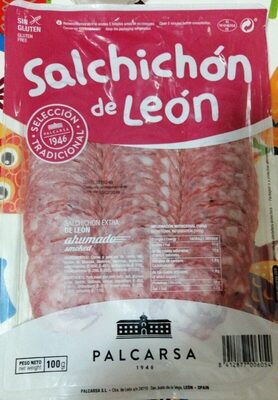Salchichón de León - Palcarsa - 100 g
Aquesta pàgina del producte no està completa. Podeu ajudar a completar-la editant-la i afegint-hi més dades a partir de les fotos ja disponibles, o fent-ne més amb l'aplicació de androide o iPhone / iPad. Gràcies!
×
Codi de barres: 8412877006054 (EAN / EAN-13)
Quantitat: 100 g
Marques: Palcarsa
Categories: Productes amb base de carn, Preparat de carn, Carns, Carns preparades, Peix carn i ous, Carn de porc i derivats, Porc
Etiquetes, certificacions, premis:
Lliure de gluten, Punt verd, Sense lactosa
Llocs de fabricació o processament: León, España
Codi de traçabilitat: ES 10.01467/LE CE
Països on es va vendre: Espanya
Matching with your preferences
Entorn
Empaquetament
Transport
Report a problem
Fonts de dades
Producte afegit per kiliweb
Última modificació de la pàgina del producte per fabi2.
La pàgina del producte, també editada per alexrios, maylord, musarana, openfoodfacts-contributors, roboto-app, yuka.E-x_P_ypHd19LPbg974z5RmXNcDxP_IBJFMfog, yuka.EbBpJ9W0IOh9QvTgi6s1-jaLGsT4Mqd9F04Eog, yuka.WnBoYUQveGV0TWdRdE5vR3poek4wKzlFbkxieWZtTzBKZU1MSWc9PQ, yuka.sY2b0xO6T85zoF3NwEKvlmtoeIHfnB_ULxz5w2bb9O6DNqXnQclgu9LfCKs, yuka.sY2b0xO6T85zoF3NwEKvln5jWuuG-j-faxjttXSp4e-8IpjsZMtoy4nICqs.










